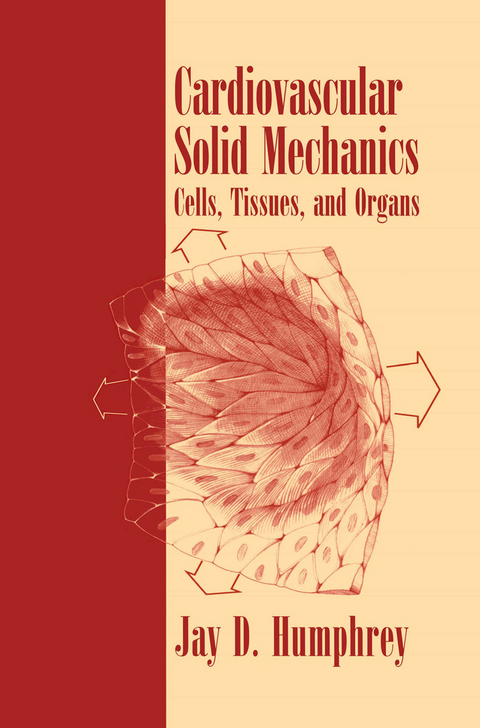
Cardiovascular Solid Mechanics
Cells, Tissues, and Organs
Seiten
2010
|
Softcover reprint of hardcover 1st ed. 2002
Springer-Verlag New York Inc.
978-1-4419-2897-9 (ISBN)
Springer-Verlag New York Inc.
978-1-4419-2897-9 (ISBN)
The vitality of the cardiovascular system, which consists of the heart, vas culature, and blood, depends on its response to a host of complex stimuli, including biological, chemical, electrical, mechanical, and thermal. The focus of this book, however, is on the response of the heart and arteries to mechanical loads from the perspective of nonlinear solid mechanics. Through my own research in this field, I have come to realize that study ing the complex responses of cardiovascular cells, tissues, and organs nec essarily requires a combined theoretical, experimental, and computational approach. Theory is needed to guide the performance and interpretation of experiments as well as to synthesize the results; experiment is needed to study the responses of the system to well-controlled loads and to test can didate hypotheses and theories; and due to the geometric and material non linearities inherent to cardiovascular mechanics, computation is needed to analyze data as well as to solve boundary and initial value problems that correspond to either experimental or in vivo conditions. One of the primary goals of this book is to introduce together basic analytical, experimental, and computational methods and to illustrate how these methods can and must be integrated to gain a more complete understanding of the bio mechanics of the heart and vasculature. Despite the focus on cardiovascu lar mechanics, the fundamental methods, indeed many of the specific results, are generally applicable to many different soft tissues.
1. Introduction.- 2. Mathematical Preliminaries.- 3. Continuum Mechanics.- 4. Finite Elasticity.- 5. Experimental Methods.- 6. Finite Elements.- 7. The Normal Arterial Wall.- 8. Vascular Disorders.- 9. Vascular Adaptation.- 10. The Normal, Mature Heart.- 11. Epilogue.- Appendices.- I. Nomenclature, Common Abbreviations, and Conversion Factors.- I.1 Nomenclature.- I.2 Common Abbreviations.- I.3 Conversion Factors.- II. Results for Curvilinear Coordinates.- II.1 Cylindrical Coordinates.- II.2 Spherical Coordinates.- II.3 Prolate Spheroidal Coordinates.- II.4 Exercises.- II.5 Reference.- III. Material Frame-Indifference.- III.1 Exercises.
| Erscheint lt. Verlag | 1.12.2010 |
|---|---|
| Zusatzinfo | XVI, 758 p. |
| Verlagsort | New York, NY |
| Sprache | englisch |
| Maße | 155 x 235 mm |
| Themenwelt | Medizinische Fachgebiete ► Innere Medizin ► Kardiologie / Angiologie |
| Studium ► 1. Studienabschnitt (Vorklinik) ► Physiologie | |
| Naturwissenschaften ► Biologie ► Genetik / Molekularbiologie | |
| Naturwissenschaften ► Biologie ► Zoologie | |
| Naturwissenschaften ► Physik / Astronomie ► Angewandte Physik | |
| Technik ► Umwelttechnik / Biotechnologie | |
| ISBN-10 | 1-4419-2897-9 / 1441928979 |
| ISBN-13 | 978-1-4419-2897-9 / 9781441928979 |
| Zustand | Neuware |
| Haben Sie eine Frage zum Produkt? |
Mehr entdecken
aus dem Bereich
aus dem Bereich
in Fällen, Fragen und Antworten
Buch | Softcover (2024)
Urban & Fischer in Elsevier (Verlag)
CHF 124,60
Diagnostik und interventionelle Therapie | 2 Bände
Buch (2024)
Deutscher Ärzteverlag
CHF 489,95
Buch | Softcover (2023)
Urban & Fischer in Elsevier (Verlag)
CHF 61,60


